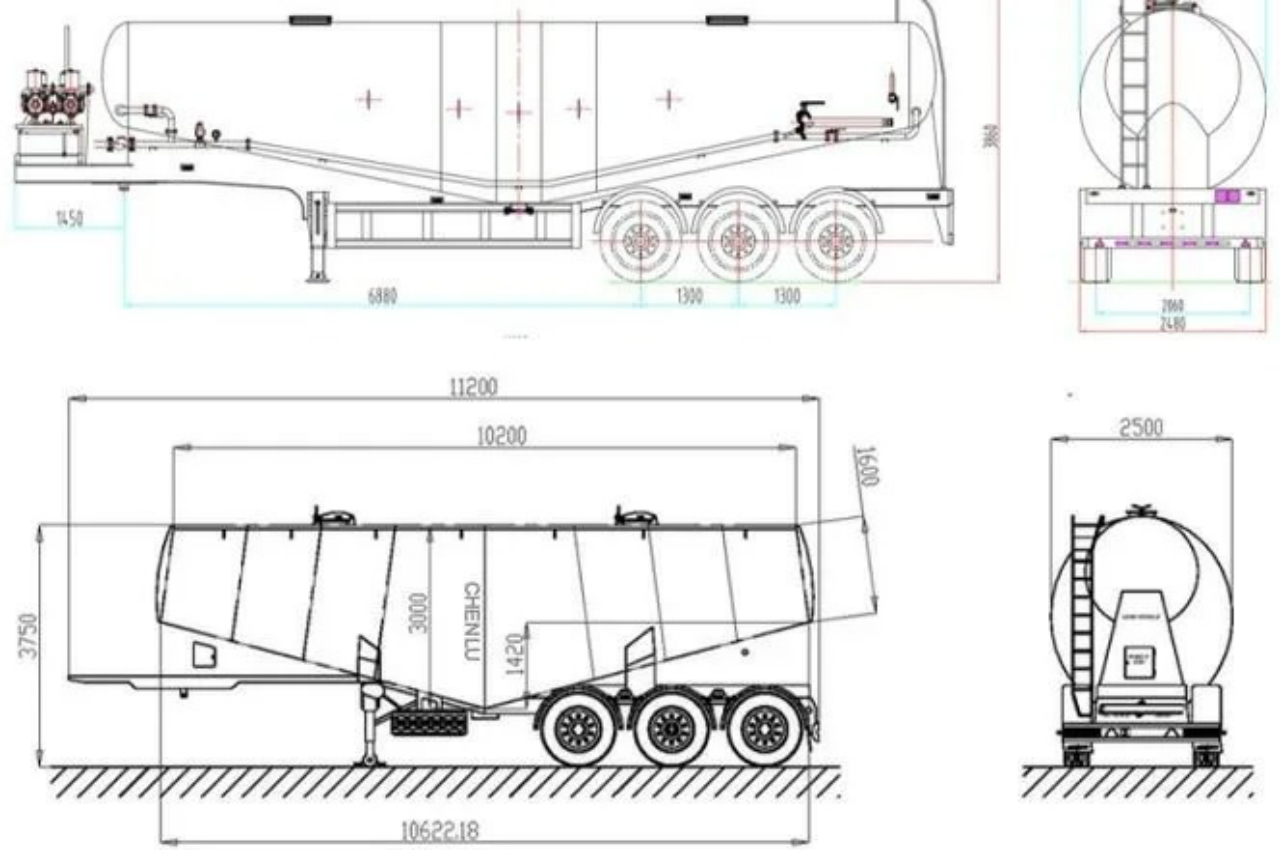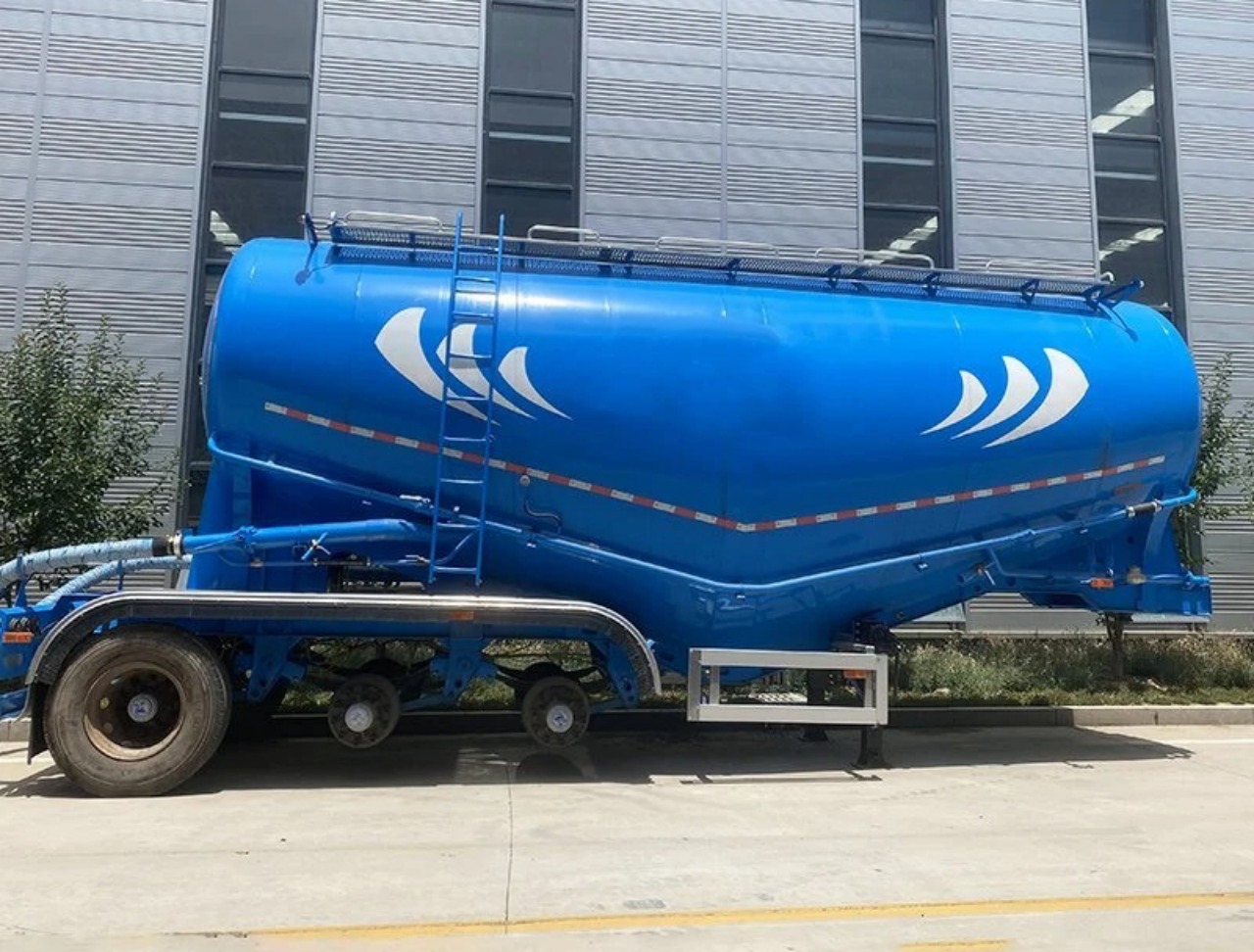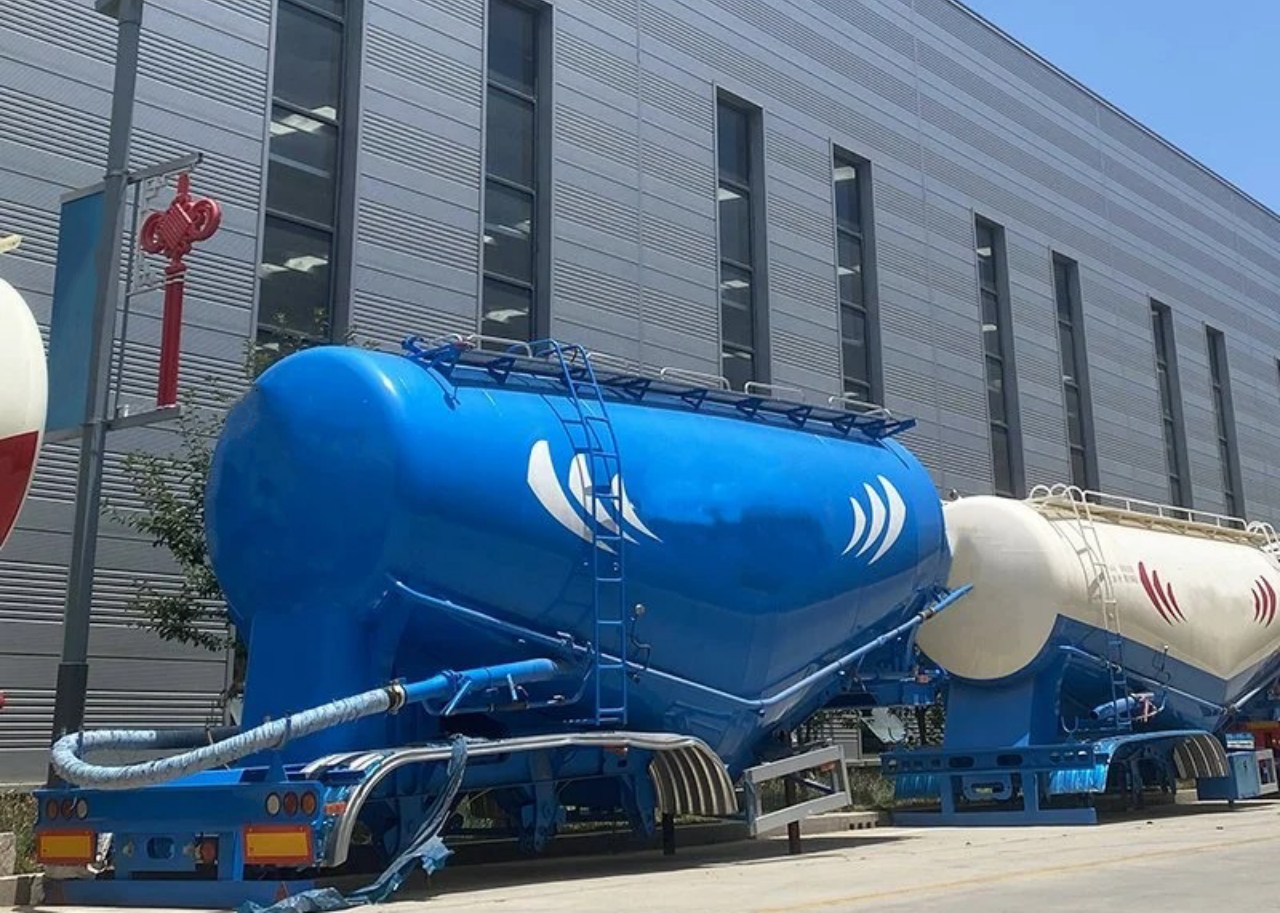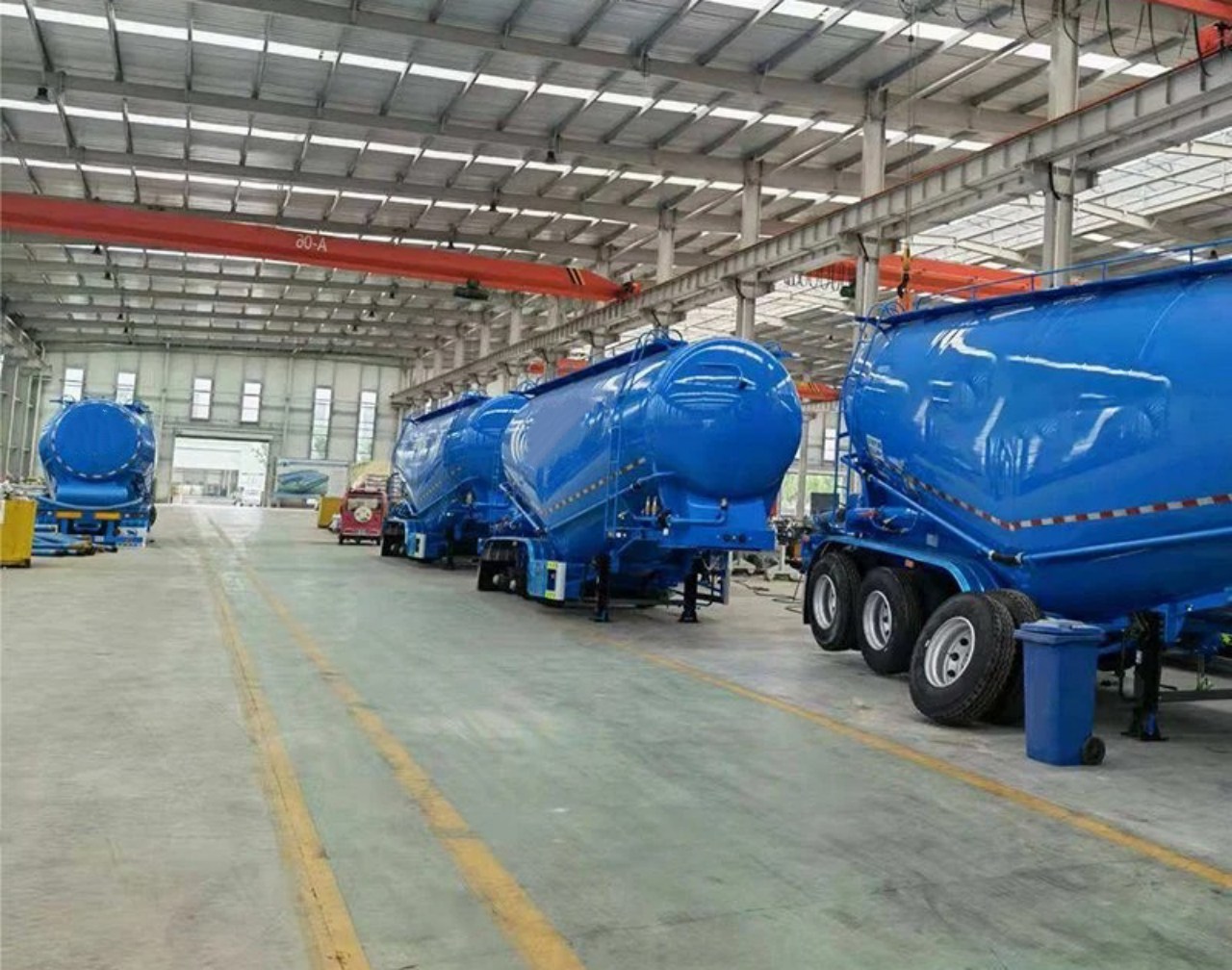Dry bulk trailers play a crucial role in the transportation of loose, dry materials such as cement, flour, plastic pellets, lime, sand, and fly ash. These trailers are a key component of logistics chains in the construction, agricultural, and chemical industries. One of the most commonly asked questions about dry bulk trailers is: What is their capacity? While this may seem like a simple query, the answer depends on several factors, including trailer type, design, regulatory limitations, and the nature of the material being hauled. This article explores these variables in depth to give a clearer picture of dry bulk trailer capacity.
Understanding Dry Bulk Trailers
Before diving into specific capacities, it’s important to understand what a dry bulk trailer is and how it functions. A dry bulk trailer, also known as a pneumatic trailer or bulk tanker, is designed to carry dry, flowable products in bulk quantities. These trailers are typically constructed with a series of conical hoppers mounted on a chassis, and they discharge their contents using pressurized air—hence the term “pneumatic.”
Dry bulk trailers are completely enclosed to protect their contents from moisture and contamination, making them suitable for transporting sensitive materials like food-grade flour or industrial chemicals.
Types of Dry Bulk Trailers and Their Capacities
Dry bulk trailers come in several configurations, each designed for specific applications. The capacity of a trailer largely depends on its size, number of compartments, and regional regulations. Here are the primary types:
1. Standard Dry Bulk Trailers (Pneumatic Tankers)
- Capacity Range: 1,000 to 1,650 cubic feet (28 to 47 cubic meters)
- Weight Limit: Typically rated for 25 to 30 tons (22,000 to 27,000 kg)
These are the most common type of dry bulk trailers. They usually feature 1 to 3 hoppers and are used for hauling products like cement, lime, or sand. In North America, a typical standard dry bulk trailer might have a capacity of around 1,040 to 1,200 cubic feet (29 to 34 m³), with a gross weight limit of approximately 80,000 lbs (36,287 kg) under federal highway regulations.
2. Large-Capacity Trailers
- Capacity Range: 1,600 to 2,000 cubic feet (45 to 57 cubic meters)
- Weight Limit: Similar to standard trailers, but may require lighter materials to be within legal road weight limits
Larger trailers are used for lighter-density materials like flour or plastic pellets. Their larger volume allows for more cargo by space, but they must still adhere to weight restrictions. These trailers are often used in long-haul scenarios where payload efficiency is a priority.
3. Food-Grade and Sanitary Trailers
- Capacity Range: 1,000 to 1,500 cubic feet (28 to 42 cubic meters)
- Special Features: Polished interiors, stainless steel construction, no cross-contamination design
Used for sugar, flour, starch, and other edible products, these trailers must meet rigorous hygiene standards. While their volume is similar to industrial pneumatic trailers, they typically feature specialized linings and discharge systems, slightly reducing usable capacity.
4. Mini Bulk Trailers
- Capacity Range: 500 to 900 cubic feet (14 to 25 cubic meters)
- Use Case: Urban deliveries, smaller quantities, lighter materials
These are ideal for operations requiring frequent stops or access to narrow streets. Their reduced size makes them more maneuverable but limits their volume and payload.
Factors Affecting Trailer Capacity
Several variables can affect how much a dry bulk trailer can carry:
1. Material Density
Dry bulk trailers are rated in terms of volume (cubic feet or cubic meters), but the actual payload in weight depends heavily on the material’s bulk density. For instance:
- Cement: ~94 lbs/ft³ (1,505 kg/m³)
- Flour: ~30-40 lbs/ft³ (481-641 kg/m³)
- Plastic pellets: ~35-45 lbs/ft³ (561-721 kg/m³)
A trailer with a volume of 1,200 ft³ may haul 28 tons of cement but only 15 tons of flour due to the difference in density.
2. Legal Weight Limits
Government regulations on road weight—typically around 80,000 lbs (36,287 kg) gross vehicle weight in the U.S.—can limit how much a trailer can carry, even if it has space for more. Axle weight limits also apply, often necessitating the use of additional axles or spread configurations.
3. Trailer Configuration
Some trailers are designed with multiple compartments to allow the hauling of different materials simultaneously or to better manage weight distribution. This may slightly reduce total capacity compared to single-compartment trailers.
4. Construction Materials
Dry bulk trailers can be made from aluminum or steel. Aluminum trailers are lighter, allowing for a higher payload within legal weight limits. Steel trailers are more durable but heavier, reducing usable payload.
Loading and Unloading Considerations
Capacity is also influenced by how efficiently a trailer can be loaded and emptied. Factors like fill angle, hopper shape, and aeration systems all play roles in how completely a trailer can be loaded or discharged.
Modern trailers often come equipped with fluidizing pads or aeration cones, which help materials flow out smoothly during unloading. Poor flow characteristics or material compaction can result in partial loads being carried or incomplete discharges, affecting overall efficiency.
Optimizing Payloads
Fleet operators and logistics planners must carefully balance trailer volume and legal payload limits to optimize operations. For high-density materials, the trailer may be filled by weight before it is filled by volume. Conversely, with low-density materials, trailers may be volumetrically full but under the legal weight limit.
Some companies use specialized software to simulate load scenarios based on material type, trailer specs, and route weight restrictions to maximize each haul’s efficiency.
Conclusion
The capacity of a dry bulk trailer is not a fixed figure but a variable number influenced by trailer design, regulatory constraints, and material characteristics. While most standard pneumatic dry bulk trailers hold between 1,000 and 1,650 cubic feet of product, the actual tonnage they carry can vary widely based on density and legal weight limits.
Understanding these dynamics is essential for anyone involved in bulk transport logistics. Choosing the right trailer for the job not only ensures regulatory compliance but also maximizes profitability and operational efficiency. Whether transporting cement across state lines or delivering flour to urban bakeries, the capacity of a dry bulk trailer is a cornerstone consideration in bulk material transport.





